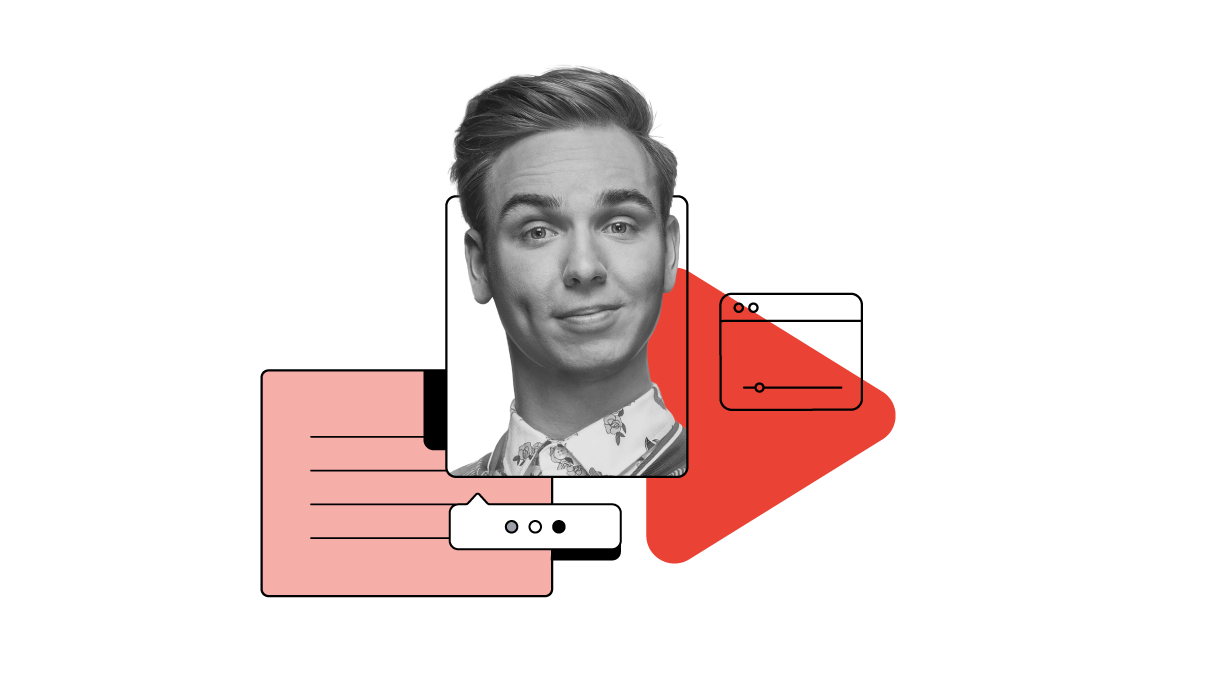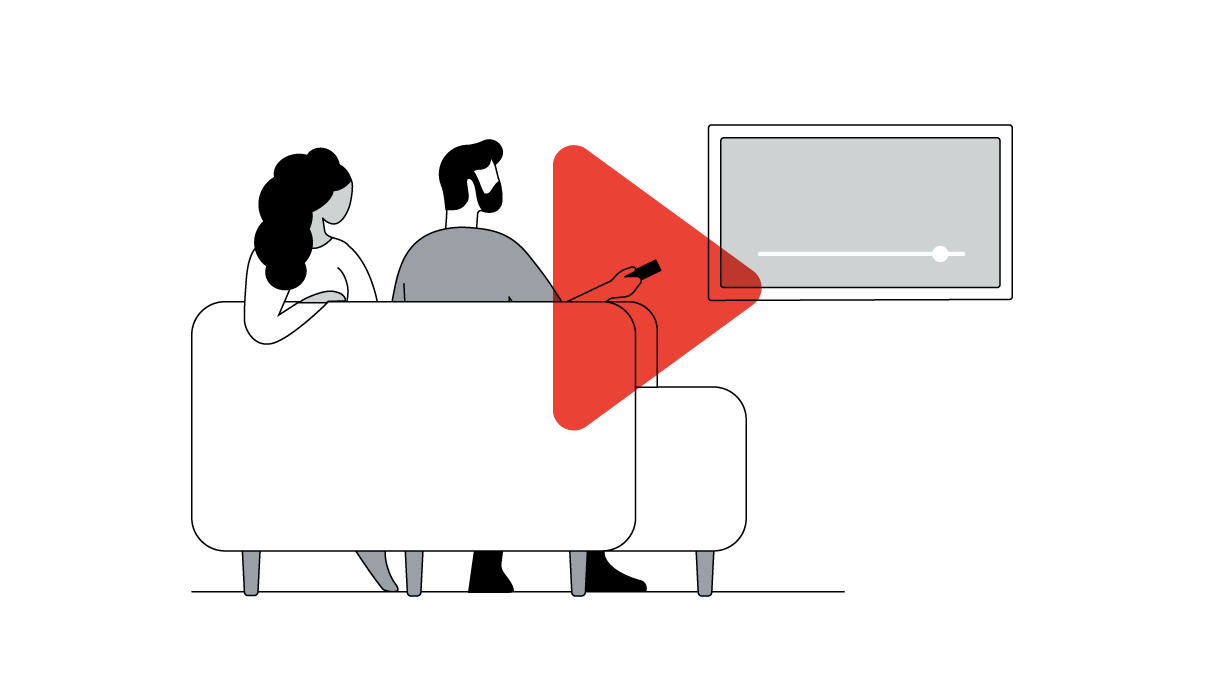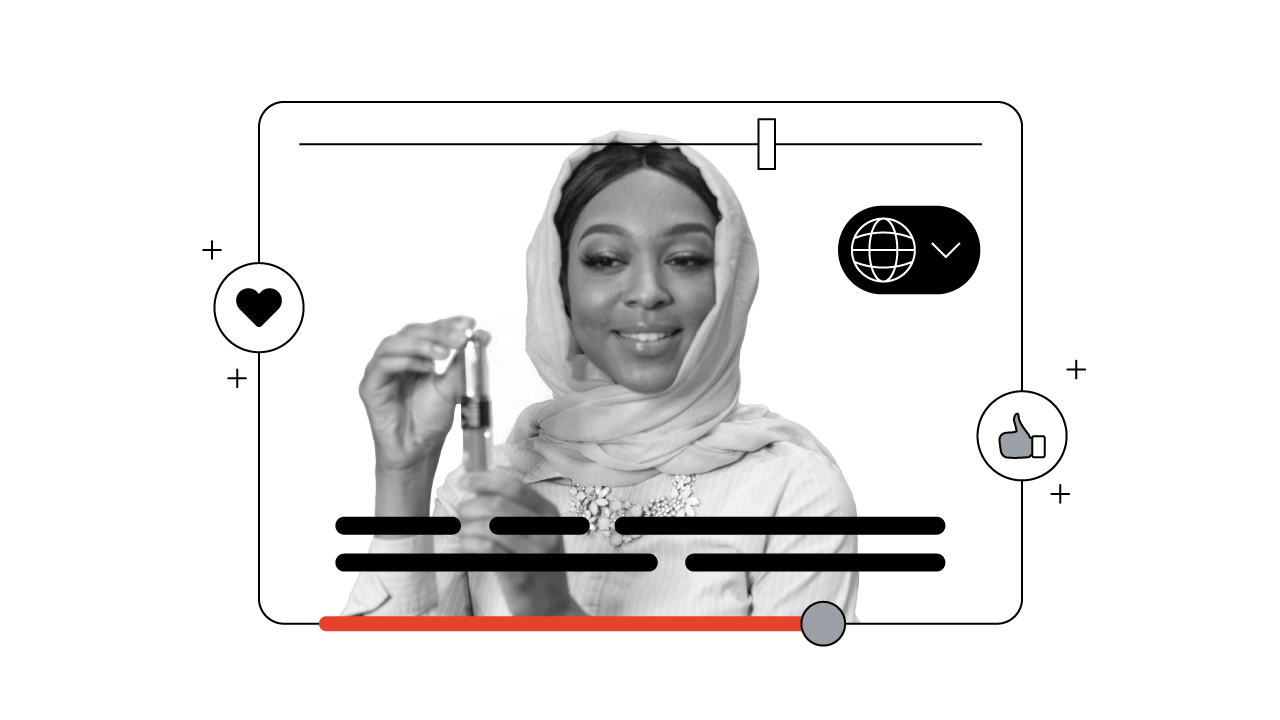In our 3 Step Guide to an Always On Performance Video Strategy, we spoke about how brands typically favour peak moments in MENA – think Ramadan, back-to-school, or end-of-year - although consumers actually make purchase decisions across different categories throughout the year. With this in mind, we explored the benefits of Always On performance video campaigns focused on using YouTube Action formats specifically designed to generate leads, drive sales, and record strong ROI.
When it comes to successfully achieving all three, research reveals that creativity is key. According to Harvard Business Review, creative marketing content can increase ROI x2, with Nielsen research revealing that 49% of sales contribution value is down to clever creative strategy. On YouTube, you have 5 seconds to grab a video viewer’s attention and get them interested in your story. Our data shows that if your creative content isn’t up to scratch, you may lose 50% to 70% of your target audience between 5 second and 7 seconds. If you want to make an impact through video, you need to create made-for-online branded content. You can do that by remembering ABCD.
Creative strategy is as easy as ABCD
Creating assets for branding is a different game than creating ones tailored specifically for performance videos. Here is our ABCD guide:
A for Attract – Story is king when it comes to attracting someone’s attention. Start your story by clearly outlining the problem or tension point. Top performers here manage to get most of their core propositions into the first 5 seconds, using the rest of the ad to support or extend their message. However, not all ads are logical. Many use emotion to connect with audiences, but they still lead with the core proposition.
B for Brand – Once viewers are past the first 5 seconds, they’re actively choosing to keep watching your content, so give them something useful and creative. Top-performing ads provide many reasons for people to believe in their brand or product (the hero of the story), adding additional ‘chapters’ of information to the core proposition. Top advertisers prioritize their message carefully, showcasing the most compelling parts first, and extending from there.
C for Connect – Our research suggests that the most successful brands aren’t shy when it comes to sharing the details of their product or service, taking the time to make their case about why a viewer should choose them. You can hold the viewer’s attention by making them care about something, using creative to connect your solution to the problem or tension point. It’s important not to waffle though. If your viewers are still watching, you need to keep giving them useful information. Remember, they can act or skip at any point. Keep their attention until the very last second.
D for Direct – This is where the power of YouTube Action really comes in. In this fourth step, it’s time for a clear call to action. Directly ask the viewer to do something, whether it’s clicking to your brand’s website, watching another video, or visiting a local store. Use info cards, end screens, and CTA overlays to motivate your audience to engage.
Choose your brand’s ideal action story
There are four types of action stories to consider depending on what you want to achieve:
- Explainer – These usually feature a person introducing a problem followed by a multi-step benefit-driven solution that comes from using your offering.
- Demo – This is similar to the Explainer except you’ll feature your product/service in the story. This approach is perfect for multi-step products or services where the product is a core selling point.
- Offer – These are simple, single offers. There’s no need to over-complicate these, with most being applicable for retail, timely sales offers, and clients with straightforward propositions.
- Teaser – Instead of being a complete story, this story features a problem-statement setup that prompts a click through for a much more involved or considered sale.
Edit your creative to elevate your campaign’s performance
Simple edits to your creative can elevate performance significantly. These include:
- Fast cuts and pacing – If you’ve got a 30-second ad, can you edit it down to a 20- or 15-second ad instead?
- Bright footage – Ensure your creative shows up on dim phone screens.
- Close cropping – This is vital to your campaign’s success, and it’s easy to achieve. For one Klondike campaign, Google’s Unskippable Labs’ experiments team found that edited creative performed 15% better. So, make sure to zoom in on faces and key details.
- Use big text and graphics – This helps your creative stand out on smaller screens.
Best practice tips: How successful brands approach creative strategy
For the launch of the Galaxy Note 9 smartphone in MENA, Samsung teamed up with Google to unleash an always-on video campaign on YouTube that – for the first time – spanned the entire funnel, from branding to performance. Google’s creative team developed a new YouTube strategy to include full-funnel capability built around brand and performance pillars. Focusing on new action-oriented formats and featuring a sophisticated audience strategy using in-market and affinity segments layered with device targeting and custom intent, the strategy also showcased remarketing for lower-funnel conversions. This ensured proper measurement setup, including Brand Lift Surveys and micro-conversions on the website to track lower-funnel performance. The campaign, piloted across the Levant and then rolled out to the rest of MENA, saw a 60% increase in ad recall, up to a 10% increase in purchase intent and consideration, an increase of up to 20% in searches on brand terms, and a 100% increase in searches on product keywords. Action formats and targeting showed strong performance skewing to lower funnel, with conversion rates of up to 10% from custom intent audiences. That’s 3x higher than standard campaigns, with up to 30% lower CPC than standard campaigns.
When retailer Vavavoom used the TrueView for action video campaign type, they also drove a substantial amount of sales, with an impressive 14x Return on Ad Spend (ROAS) and 300k website interactions in 3 months. Retail company, Decathlon, also went Always On with Trueview for action, but over two phases. Phase one, pairing TrueView for action and beyond-demo audiences, saw a 175% conversion rate at 65% lower CPA, with Phase Two – matching TrueView for action and creative personalization – seeing a 10% rise in purchase intent. Another retail company, Overstock, achieved a 3X ROAS with an 80% increase in conversions versus all other videos.
Key takeaway: Made-for-online creative branded content is key to video campaign success
By creating made-for-online branded content, developing stories for the digital age, optimizing ABCD, choosing the ideal action stories, and editing your creative to elevate performance, brands have a fantastic opportunity to see improved results in their performance video campaigns. In our next follow-on piece, we focus on reaching the right audience at the ideal time through a solid media strategy that uses media and measurement tools to expand an effective Always On performance video campaign that drives active engagement.






